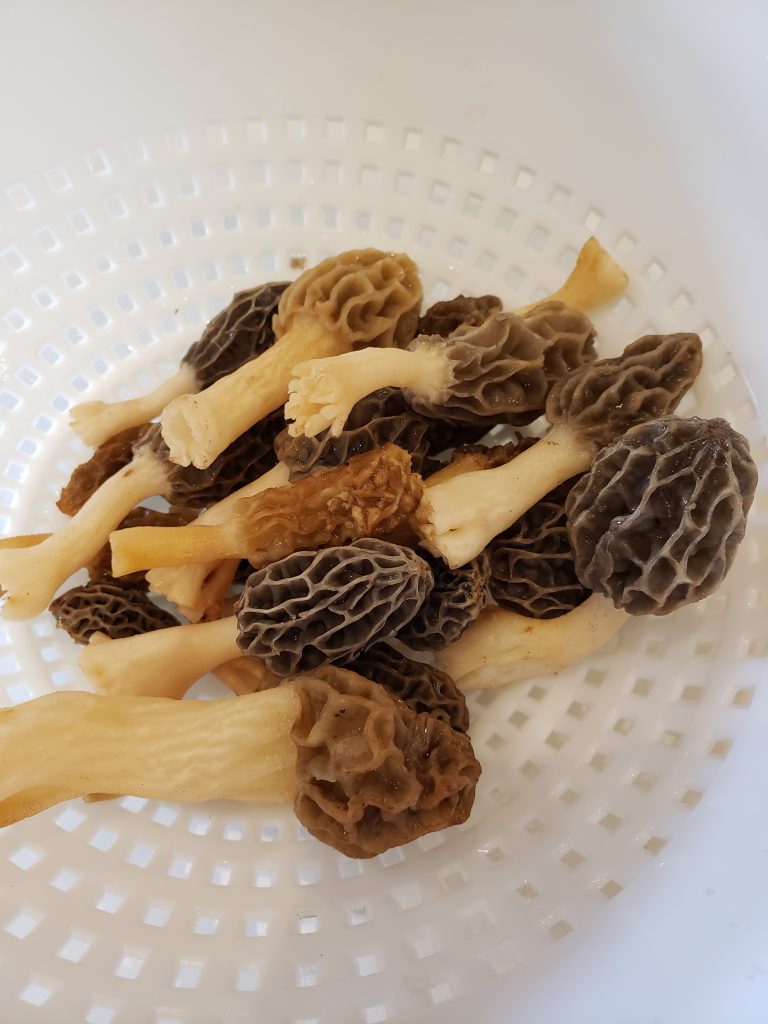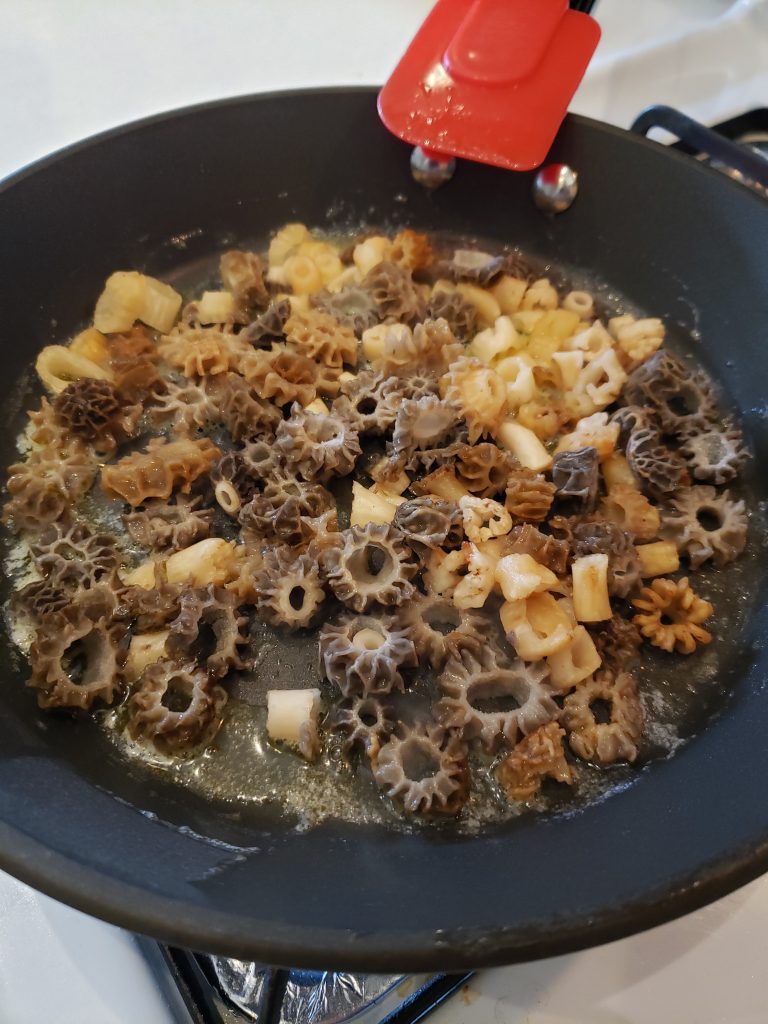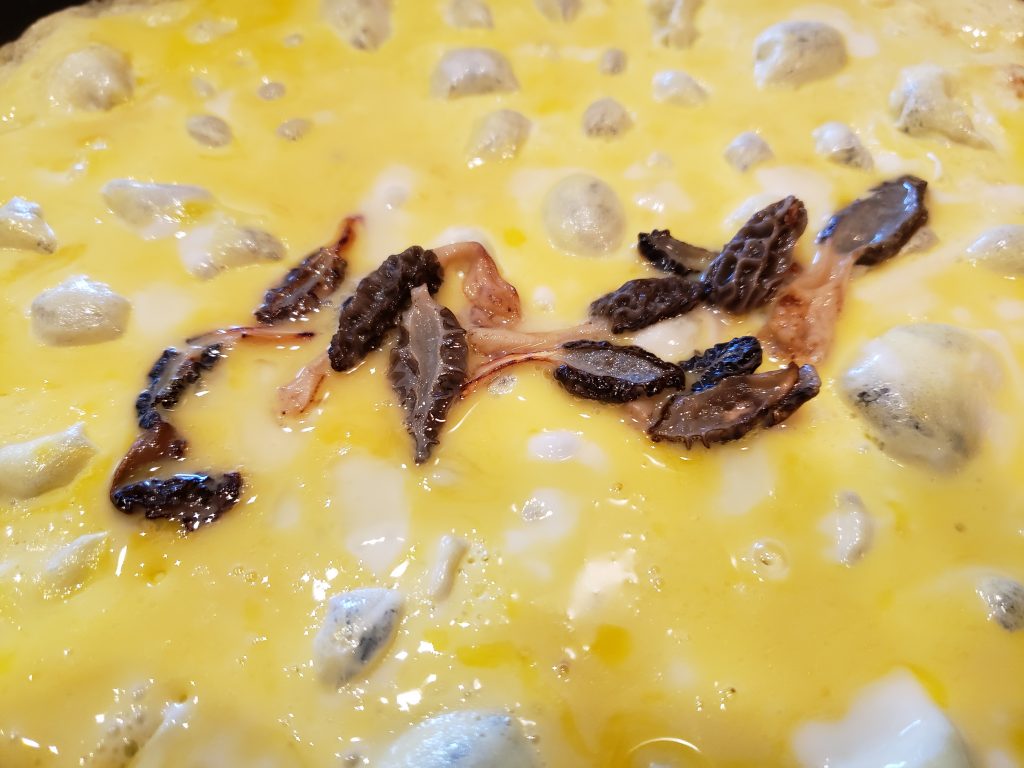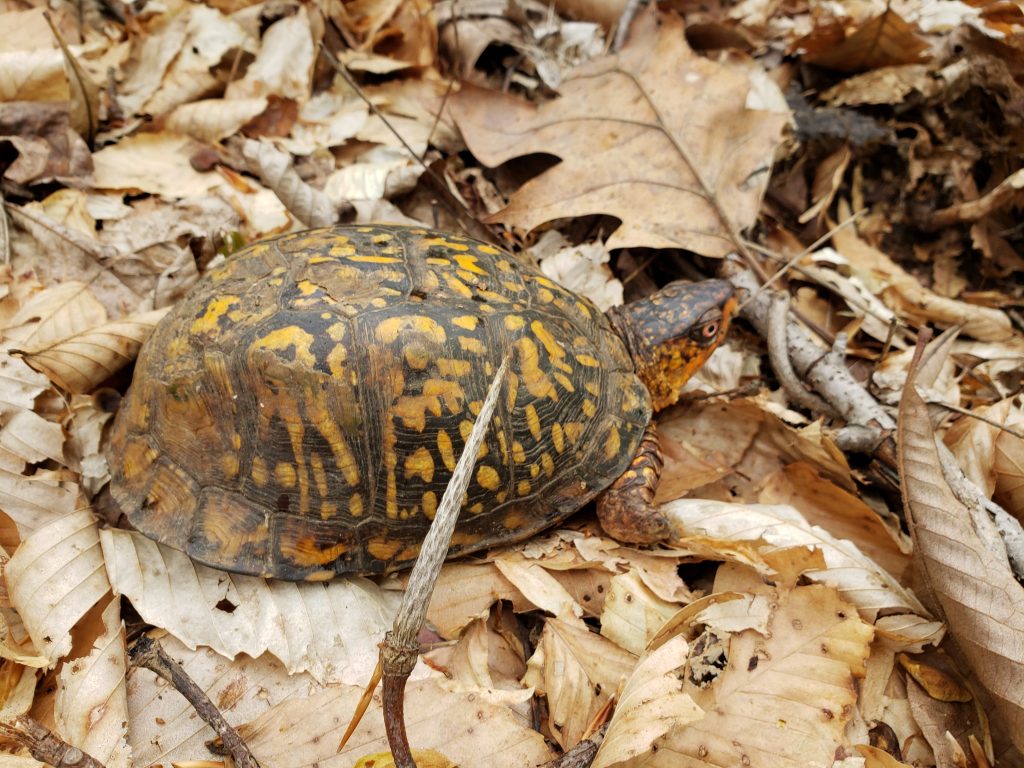When my wife and I started dating, I eventually brought her home to my folks in Appalachia. It was springtime, so naturally I figured this was a great opportunity to impress her with the foraging skills I had developed throughout my semi-feral youth.
I was gravely mistaken.
Apparently, if you pick something up off the ground and tell your girlfriend “here, eat this” that something had better be palatable in addition to merely edible. Because it turns out not everyone grew up chewing on wild mustard and sour-grass. A few bitter herbs later, and I had “introduced trust issues into our relationship”.
But one foraged food that passed the test was Morel Mushrooms. And after moving all over the country for my wife’s military career, we finally found ourselves living somewhere I could start hunting them again. If you’re not familiar with morel mushrooms, there’s a wealth of information online to bring you up to speed. YouTube alone has everything you need to start foraging for them.

Morels can be notoriously hard to find. They’re kind of finicky about where they’ll grow, and they blend in extremely well with the forest floor. If you do manage to find one, just stare at it for awhile and let your brain really learn the texture of the thing for future reference. It’ll help you spot them from then on. And since they come in a variety of shades and shapes, I really do think the texture of that ridged body is what you need to learn to see. When I find one, I’ll freeze and scan for others before I move to harvest it. Where there’s one, there’s usually more.

Once you’ve found a good morel spot, it’s important to never tell another living soul about it. Treat it like a good fishing spot and keep it secret, keep it safe. Maybe you could put the location on a note to be given to a trusted survivor in the event of your death, but I wouldn’t risk it. I’m not saying I found these because somebody slipped up and revealed a good area to check out after they’d had a few drinks last fall or anything…
But all is fair in love, war, and foraging.

One of the reasons Morels are so popular as a foraged crop is that, in addition to being delicious, they’re easy to identify. (I’ve been told that when you’re hunting mushrooms, mistaken identity can be pretty hazardous. Something about painful death, or some such). Luckily, the distinctive texture and hollow body of a Morel makes it pretty hard to confuse with anything else.
[That being said, my lawyers advise me to remind you that this is in no way a treatise on identifying edible mushrooms. You really do risk dying if you screw that up, so don’t rely on random blog posts by fiction novelists for that kind of thing.]

I treat my morels pretty simply. I like to sauté them in a little butter with salt and maybe just a touch of garlic. Then I add them to scrambled eggs or fold them into omelets.
(In the picture above, the morels are sliced across the long axis and the hollow body is obvious. Details like that are key to identifying the mushroom).

With an earthy, nutty flavor, morels are a great addition to eggs or cream-based pastas. They can be used for a lot more than that, especially if you ask the French, but those are my go-to uses when I can find them.

That last picture isn’t a morel, it’s just a box turtle. I included him because he decided to come say hi while I was hunting mushrooms.
That’s all for now, Folks – I gotta get back to work on the next Kit Barker Novel. It’s gonna be a good one!
Until Next time!
J.R. White


